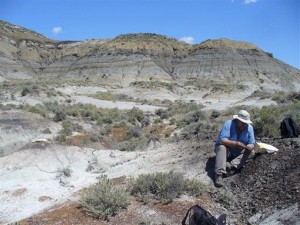 The idea that a cosmic impact ended the age of dinosaurs in what is now Mexico now has fresh new support, researchers say.
The idea that a cosmic impact ended the age of dinosaurs in what is now Mexico now has fresh new support, researchers say.
The most recent and most familiar mass extinction is the one that finished the reign of the dinosaurs — the end-Cretaceous or Cretaceous-Tertiary extinction event, often known as K-T. The only survivors among the dinosaurs are the birds.
Currently, the main suspect behind this catastrophe is a cosmic impact from an asteroid or comet, an idea first proposed by physicist Luis Alvarez and his son geologist Walter Alvarez. Scientists later found that signs of this collision seemed evident near the town of Chicxulub (CHEEK-sheh-loob) in Mexico in the form of a gargantuan crater more than 110 miles (180 kilometers) wide.
The explosion, likely caused by an object about 6 miles (10 km) across, would have released as much energy as 100 trillion tons of TNT, more than a billion times more than the atom bombs that destroyed Hiroshima and Nagasaki.


 Three more Chinese astronauts, or taikonauts, are now marooned in space following the successful return of...
Three more Chinese astronauts, or taikonauts, are now marooned in space following the successful return of...

 Susumu Kitagawa, Richard Robson and Omar M. Yaghi are awarded the Nobel Prize in Chemistry 2025...
Susumu Kitagawa, Richard Robson and Omar M. Yaghi are awarded the Nobel Prize in Chemistry 2025...






























